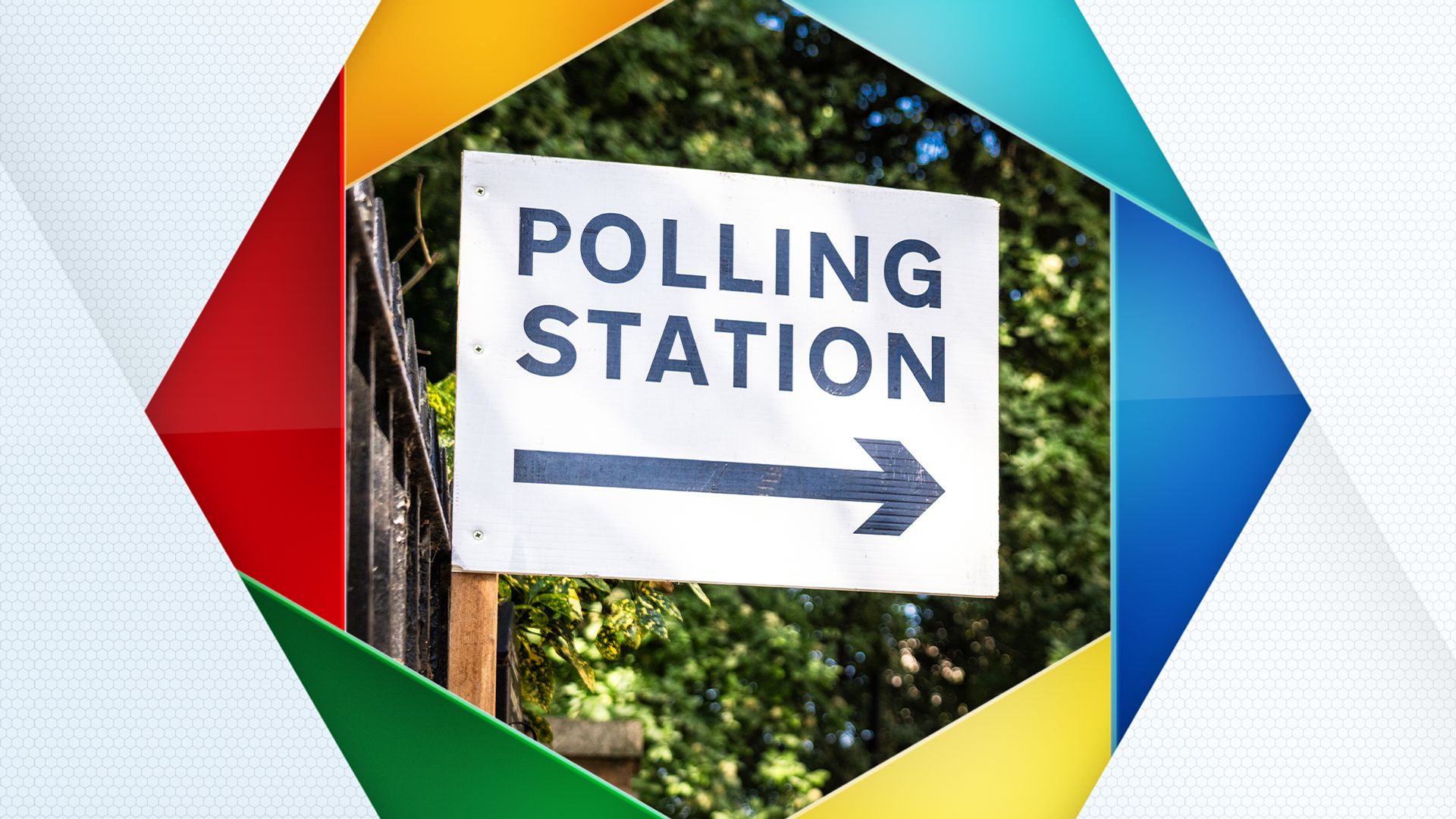Today’s YouGov/MRP poll for Sky News confirms what we have been seeing in the polls for the last eighteen months, that the Conservative government is on course for a huge defeat – losing nearly two-thirds of its MPs.
The voting intention figures implied by this poll put Labour on 43% and the Conservatives on 25%, with the Liberal Democrats on 11% and Reform 10%, largely in line with the Sky News poll tracker.
Just like any poll, there is uncertainty attached to these numbers – YouGov estimates that the result for Labour will be between 393 and 445, and for the Conservatives between 119 and 160 seats.
Election latest: Minister hangs up on Sky’s Sam Coates
Its central prediction, 422 to 140 seats, would be larger than the landslide victory secured by Tony Blair in 1997 and the largest majority for a government since 1935.
It would be a dramatic and decisive break from 14 years of Conservative rule and a period defined by the Brexit vote.
There is notable uncertainty for the predictions in Scotland, where YouGov suggests the SNP could be on between 6 and 35 seats.
This accounts for much of the uncertainty in the headline predictions and is due to the large number of marginal contests north of the border.
If Sir Keir Starmer’s Labour secure a historic victory, it will be aided by victories in close races in Scotland.
The MRP (multi-level regression and post-stratification) poll also provides important clues to what the pattern of voting might be on 4 July.
The estimates suggest that the sorts of places that delivered the Conservatives their decisive victory under Boris Johnson in 2019 are turning away from the party.
You might come across the term MRP quite a lot in the coming weeks as we head towards the general election on 4 July.
An MRP poll – which stands for multilevel regression and post-stratification – is a type of poll that gets pundits excited because it draws from large amounts of data, including a large sample size and additional information like locations.
MRP polls first ask a large representative sample of people how they will vote. They then use that information of how different groups say they will vote combined with information about the sorts of people who live in different constituencies. This allows the pollster to estimate how people will vote in each constituency across the country – even when they may have surveyed just a few people, or even none, in some places.
This can then be broken down into smaller groups to see how voters in different areas say they plan to vote. Rather than making more generalised assumptions that everyone behaves the same way in different constituencies, it takes into account the fact that every constituency is its own race and local issues and trends may be at play.
What MRP can’t do is account for very specific local factors – such as a hospital or large employer closing down in a constituency, or a scandal relating to a particular candidate.
It still involves a lot of assumptions and estimates – and some races are too close to call with any level of certainty. It also only gives a snapshot of people’s opinions, and a lot can change over the course of an election campaign. However, it does give us a more nuanced idea about what the general election result could be than other more generic polls.
Some of the largest predicted falls in the Conservative vote are in seats where the party won over 60% in 2019 – places such as Castle Point and Great Yarmouth.
The largest Conservative majority that Labour is predicted to overturn is 43 points in Cannock Chase.
Labour is forecast to win seats such as North West Norfolk – last won by the party in 1997, Chatham and Aylesford, Basildon and Billericay, pointing to how far it would drive into Conservative strongholds.
The pattern of swing away from the Conservatives is ‘proportional’ – meaning their support has fallen most in those areas where it was previously highest. This will put many constituencies in play that it previously would have been unimaginable that the party could have lost.
Behind this pattern is the finding that Conservative support is down most in seats that voted to leave the EU in 2016, are older than average, are less ethnically diverse and have more people in working-class jobs.
The change in Labour’s vote is far less structured by Brexit – it is seeing gains across most constituencies, with marginally larger rises in areas that voted Leave.
Notably, Labour’s vote appears to be up most in constituencies where it won between 20% and 35% of the vote in 2019. If this pattern was replicated at the election, the party’s vote could become much more ‘efficient’ – enabling it to win more seats with small majorities.
Perhaps surprisingly, the Lib Dem vote is up most on average in areas that voted to leave the EU in 2016. This in part reflects the party’s strength in the South of England and the sorts of voter the party attracts – doing slightly better in older, less diverse, more middle-class parts of the country.
However, the biggest increases in the party’s vote are found in a group of constituencies where there is not very high or very low support for Brexit (places that voted between 40% and 60% Leave).
This suggests the Lib Dems are making gains in target seats that are not defined by their Brexit vote – this would mark a significant departure from 2019.










